Summer Premium Touring Passenger Car Tire Tests
 44
44
Tire Reviews Tire Tests
 1883
1883
Summer Tire Tests
 595
595
All Season Tire Tests
 1190
1190
Winter Tire Tests
Total Tests: 528
Most Tested Brand: Michelin (488 tests)
Most Tested Tire: Dunlop Winter Sport 5 (63 tests)
Test Type
Season
Vehicle Type
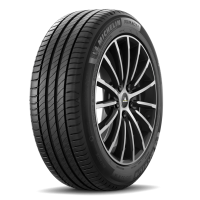
For the 2021 Sport Auto summer tire test, the German publication have tested eleven tires in the relatively small 195/55 R16 tire size. As this tire size is intended for smaller vehicles such as the Audi A1, Ford Fiesta, Peugeot 208 and other similar sized cars, Sport Auto used a Seat Ibiza for testing, and placed all eleven sets of tires through the usual dry, wet and environment based tests.
Read Full Test >>

For the 2021 ADAC summer tire tests, the German organisation selected the popular 205/55 R16 and 225/50 R17 summer tire sizes.
As usual with ADAC tests there is little raw data provided, instead the testers grading each tire with a score, but this year we do get wear data (below) and even some of the testers subjective thoughts on the tires, which is an excellent addition.
Read Full Test >>
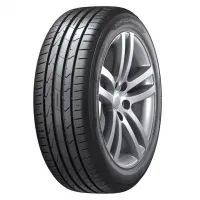
Without fail, each year German publication Auto Bild provides the most comprehensive overview of the summer tire market by testing a huge amount of tires ability in the dry and wet, in order to work out which twenty tires deserve to be tested in their full summer tire test.
For 2021, Auto Bild have tested 53 tires in the most popular tire size in Europe, 205/55 R16.
All 53 sets of tires have their wet and dry braking results below, with the shortest 20 combined braking distances progressing to the full test, which will be on the website shortly.
Read Full Test >>
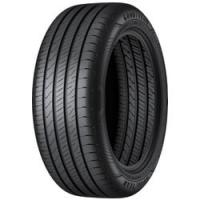
This year Auto Express have tested ten 205/55 R16 summer tires using a VW Golf. You can be forgiven if this setup sounds similar, as it's almost the same test as the Tire Reviews 16" summer tire test.
As eight of the ten tires on test match tires we used in our test, but the overall results differ in places, I thought it would be an interesting exercise to look into what's different, and why that might be.
Read Full Test >>
Do you want to know what tire is best for every day, real world driving? In this test we take eleven of the very best 205/55 R16 tires on the market, plus a well regarded budget tire, to see exactly what tire performs best in the dry, wet, comfort, noise and rolling resistance tests!
Read Full Test >>

Tire testing is incredibly complicated to conduct, and one of the most difficult parts of testing is good repeatability.
Take for example wet braking. To get the wet braking distance of a tire, you don't just do the braking run once, you do it 6-8 times, delete the outliers then average out the results. Even on the most expensive test facilities in the world, with the most perfect sprinkler systems and perfect tarmac, you rarely get the same distance twice as there are so many variables, which means when you use a less than state of the art facility, results can be surprising.
This brings us on to this test by the Italian publication "al volante".
Read Full Test >>

Each year, the wonderful Swedish publication Teknikens Värld performs a summer tire test in Sweden. Their 2020 test covers ten 225/50 R17 summer tires, including the first test of the brand new Goodyear EfficientGrip Performance 2!
The unique Swedishness of the test means they don't perform dry handling, but instead the "moose test" which involves a sharp lane change at speed. Sadly, we can't database this, but you can see the results of the test in the commentary at the bottom of the page.
Read Full Test >>
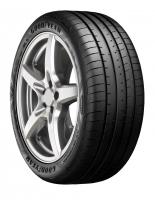
The 2020 Auto Motor und Sport summer tire test tested eleven 225/45 R18 ultra high performance tires using a BMW 3 Series.
While the group overall was extremely close, the winning Goodyear Eagle F1 Asymmetric 5 and second placed Michelin Pilot Sport 4 were almost inseparable overall, with the Goodyear narrowly taking the overall win.
Read Full Test >>

The 2020 Auto Zeitung summer tire test has been published, and as usual they've tested a really interesting mix of twenty tires in the popular 225/50 R17 size.
As 225/50 R17 tires generally bias towards comfort rather than outright sporty performance, AZ tested with the new brand BMW 3 Series, and performed the usual array of thirteen dry, wet, comfort and economy tests.
Read Full Test >>
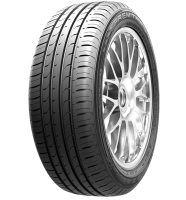
The talented guys at ACE Europe have just released their first summer tire test for 2020, and interestingly they've tested nine 215/55 R17 summer tires from the mid range sector of the market!
Read Full Test >>

It's never a bad thing when a magazine goes to the effort of testing summer AND all season tires in the same test, as it gives the motorist a good idea of the different balance of performances each tire type has, so it's great to see Auto Navigator doing exactly this for their 205/55 R16 summer tire test.
Not satisfied with just summer and all season tires, Auto Navigator have included a "test winning" winter tire, as well as worn summer and worn winter tires (tread depth unknown!)
Read Full Test >>

The Norwegian AutoMobile Federation (NAF) has tested seven summer tire patterns in 205/55 R16, and included a premium winter tire for comparison.
The winter tire performed surprisingly well during the wet braking testing, which was tested between 18 and 25c, beating the Dunlop and Bridgestone summer tires. Wet handling showed a little more weakness, with the winter tire finishing last, but it was still within a few percent of the summer tires.
Read Full Test >>
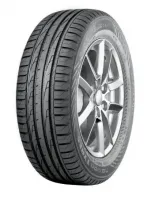
The Swedish news paper Aftonbladet have tested thirteen 205/55 R16 touring summer tires using a VW Passat.
Sadly the data is a little lacking in this test, but as the driving was done by the experts at Test World, you can be sure it was a proper tire test.
Read Full Test >>
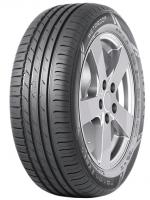
The ACE / GTU tire test is always a funny one, as they go to a lot of effort to test the tires, but then provide no data at all, only the overview scores.
For this reason, we always keep the commentary low, but it's important to have the test results on Tire Reviews, as the more tests published the better right?
Read Full Test >>

Every year Auto Bild test over fifty tires in wet and dry braking testing to decide which twenty tires make it through to the full summer tire test. In 2019 they have tested 53 patterns, using the popular 225/45 R17 summer touring tire size.
Read Full Test >>
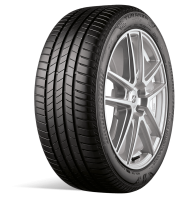
The 2019 summer tire test season is underway, and as always the first published is by the German motoring organisation ADAC!
This year ADAC have tested sixteen 185/65 R15 summer tire patterns using a VW Polo, and interestingly included the Michelin CrossClimate instead of the Michelin Energy Saver+ as the Michelin "summer" tire.
Read Full Test >>

This year the Hungarian publication Auto Navigator have tested fourteen 205/55 R16 summer tires, but also included an all season tire (the Michelin CrossClimate), a full winter tire, and most interestingly worn summer and winter tires.
It's important to note that the worn winter tire used was from last years test, whereas the worn summer tire was 7 years old and had been stored in "sub optimal conditions". While the tread depth of each of the worn tires isn't exactly clear, the worn summer tire was at a huge disadvantage due to age and storage conditions.
All tests were performed around 15c air temperature. Sadly aquaplaning wasn't tested by the magazine.
Read Full Test >>
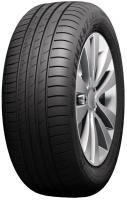
The 2018 Gute Fahrt test is a confusing tire test for a number of reasons. Firstly is tests both summer and all season tires in the same dry and wet tests, but fails to include the all season class leading Michelin CrossClimate.
Read Full Test >>

There's a lot of tires in the 2018 Auto Bild 195/65 R15 test, so we'll keep the intro as short as possible and let the data do the talking.
It's worth keeping in mind, the twenty tires chosen for this test have been through a 51 tire wet and dry braking pretest. This means the tires included in this test are some of the best tires available on the market, had Auto Bild included some of the worst tires in the pretest, the gap between the best and the worst tires overall would have been much larger.
Read Full Test >>

Every year Auto Bild test over fifty tires in wet and dry braking test to decide which twenty tires make it through to the full summer tire test. In 2018 they have used the popular 195/65 R15 summer touring tire size.
The spread of dry braking results was higher than usual this year. The best dry braking tire on test, the Hankook, stopped the car from 62mph in 34.5 metres, and the worse 42.4 metres. This 7.9 metre difference might not sound like a huge amount, but it is the difference of stopping or hitting an object at around 26 mph!
The spread in the wet was even larger. The Bridgestone was best in the wet, stopping the car from 50 mph in 34.3 metres, where as the worst tire on test took a massive 17.6 metres further, totaling 51.9 metres. That's over 4 car lengths further and a huge residual speed at time of accident.
Read Full Test >>
